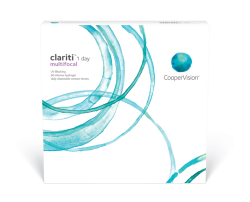If you’re over the age of 40, you may start to feel as if you need a longer pair of arms to clearly read a menu or the newspaper. If so, welcome to the world of presbyopia.
In short, presbyopia is an eye condition that affects everyone once you reach the age of 40-45. At that point, objects close up start to look blurry.
To see a book you’re trying to read clearly, you may have to s-t-r-e-t-c-h your arms farther from your eyes. Of course, you can only stretch your arms so far.
So what can you do to correct presbyopia? Read on!
Let’s better define presbyopia
As we’ve said, presbyopia affects all of us—100% —at a certain age.
It’s common and thankfully easily correctable. But you’re probably wondering what causes presbyopia to occur around our mid-forties. Here’s the answer.
Within our eyes, sitting right beneath the iris, rests the crystalline lens. It helps refract, or bend, light in our eyes and pass it to the retina. You can almost think of it as a camera lens that adjusts for focusing. As we get older, the crystalline lens loses its elasticity, worsening until you reach your early 60s. This prevents your eyes from focusing as well as they once did when you were younger.
Now you may be wondering if there are any eye exercises for presbyopia that you can do to prevent this from happening.
Unfortunately, no.
But there are steps you can take to correct the problem once it occurs.
How to correct presbyopia
If you or your family members are experiencing conditions like presbyopia symptoms—blurry vision perhaps, or difficultly in focusing on objects up close—then see your eye doctor.
Keep in mind that unless the person in question is over the age of 40, he or she doesn’t have presbyopic vision. It could be hyperopia or “farsightedness” or “longsightedness,” as most of us would say. The symptoms can seem similar, but the condition is different. (Read more about hyperopia.) Astigmatism could also be a possibility.
Once you know for sure that you have presbyopia, it’s time to explore your options to correct it.
Presbyopia eye glasses
Depending upon your condition, you may be able to don your glasses only when you’re reading. For this reason, many people refer to this type of glasses as “readers.” But what if you don’t want to take these out while in public? You can also consider…
Contact lenses for presbyopia
Multifocal contacts can help you read objects that are close and far, as well as keep your glasses in your pocket. Today’s silicone hydrogel contacts are much more comfortable and can be worn longer than those from a decade or so ago.
Presbyopia surgery
There are also surgical options you can consider to correct the condition. LASIK or CK (Conductive Keratoplasty) can create a solution in monovision for presbyopia. Essentially, this gives you one eye for focusing on distant objects and the other eye for anything up close to you.
Sound strange? It isn’t really.
Going back to our camera analogy, it’s a bit like using two lenses—one telephoto for distance and one macro lens for your small objects up close. There are also monovision contact lenses for presbyopia that do the same thing.
There’s no need to let presbyopia vision problems get you down. It happens to all of us and, as we’ve explored, there are several options for correcting it. If you’re over 40 and you’re wondering if you have presbyopia, schedule an appointment with your optometrist now.
The condition will only get worse, and there’s no reason for you to put up with the headaches and difficulties that can accompany blurry vision. Take the steps to see your world clearly today.









